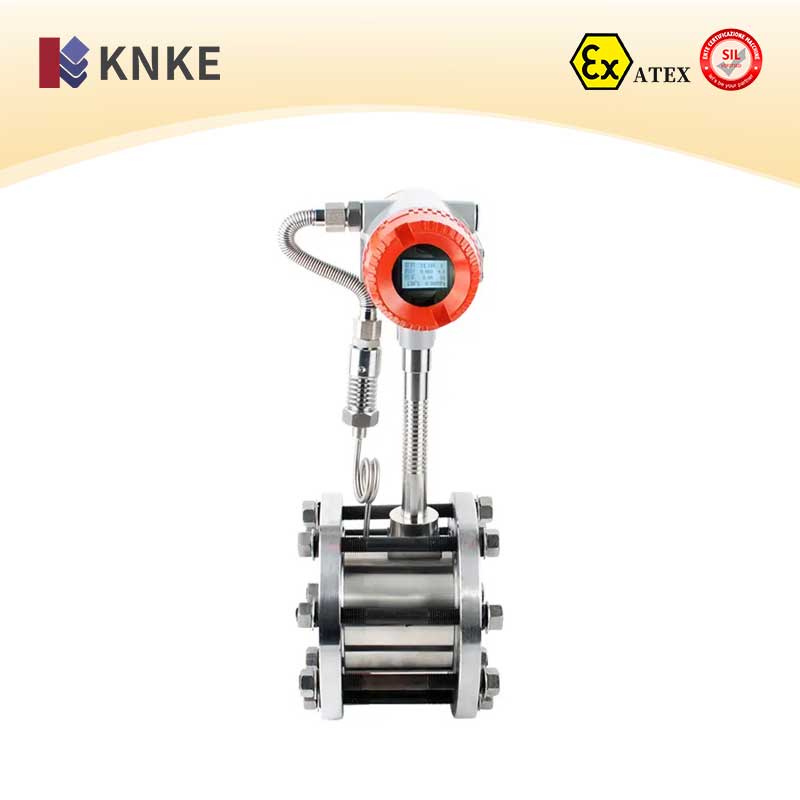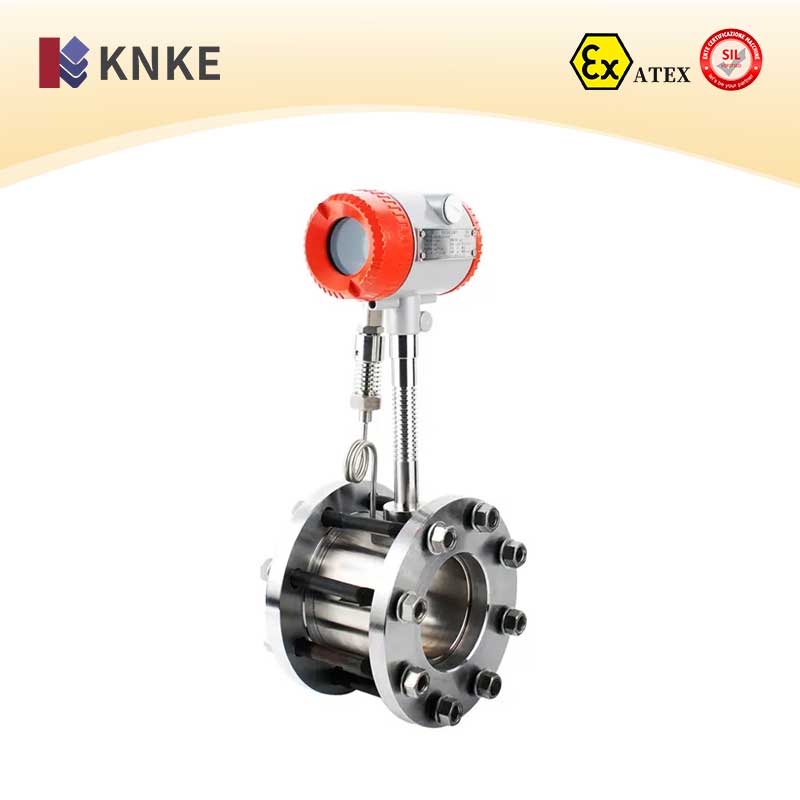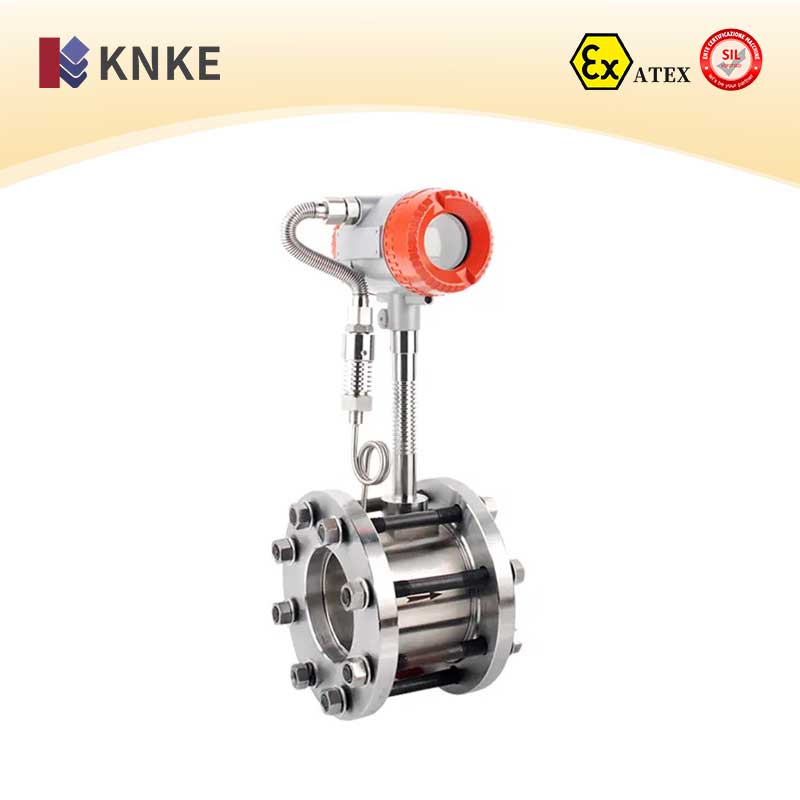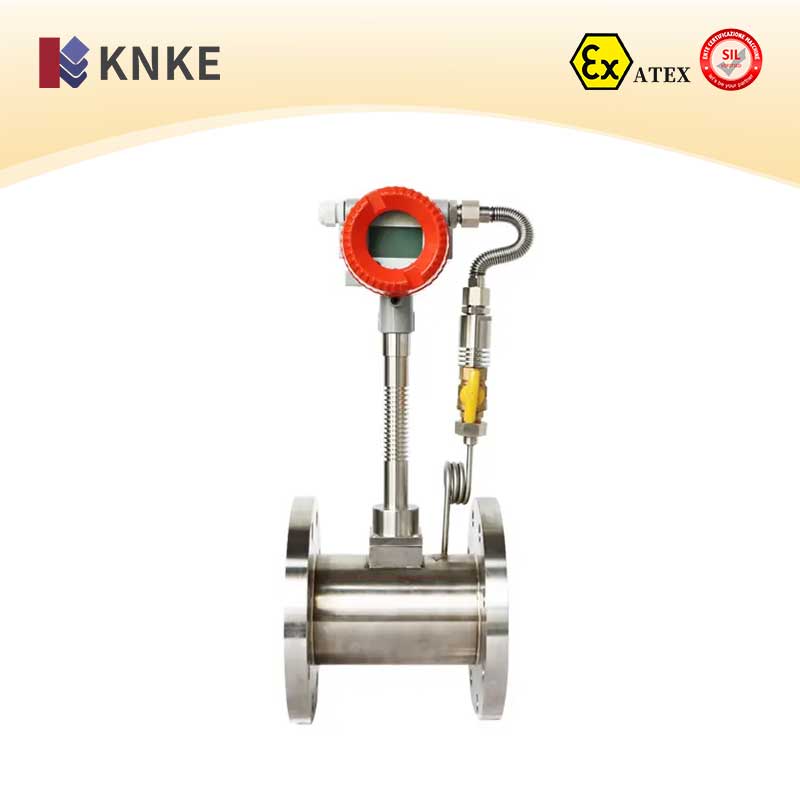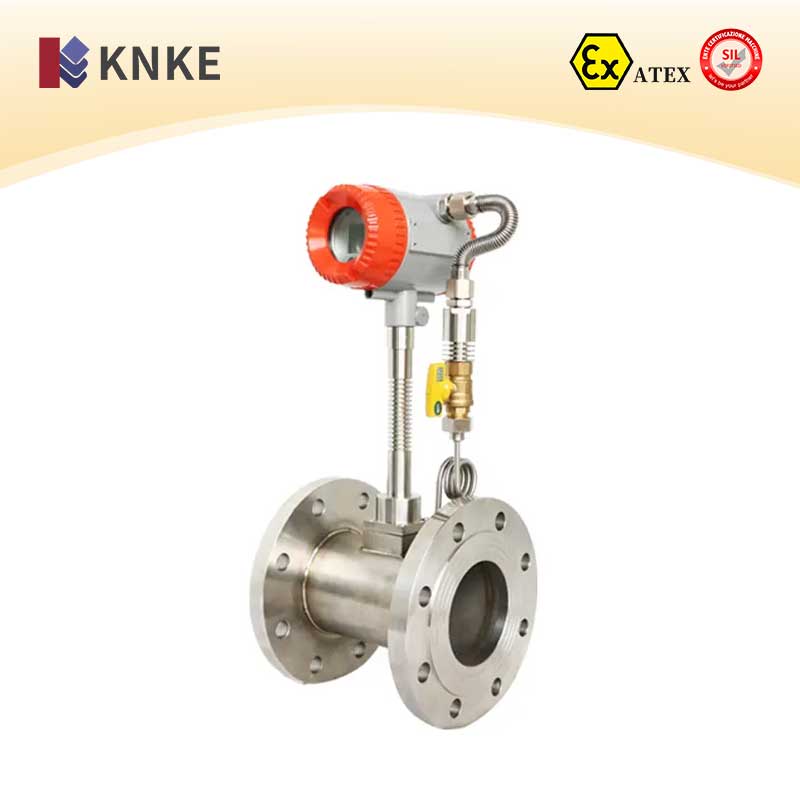Description
Overview of KNKE Steam Flow Meter
The KNKE Steam Flow meter utilizes liquid vibration principles for accurate flow measurement. It features no moving parts, ensuring durability, reliability, and low maintenance. This flow meter provides precise readings across a broad flow range, unaffected by medium temperature, pressure, viscosity, or composition. The built-in temperature and pressure compensation corrects for density variations, making it ideal for steam and gas applications. With support for high temperatures up to 350°C (662°F), it can measure extremely low flow rates, making it an excellent solution for steam flow measurement.
Working Principle of the KNKE Steam Flow Meter
The KNKE Steam Flow meter operates based on vortex shedding principles. A vortex generator body within the flow causes the formation of Kármán vortices. The frequency of these vortices is directly proportional to the flow velocity. This relationship allows accurate measurement of fluid flow. The frequency of vortex shedding (f) and volumetric flow (qv) are related through the equations:
- f = Sr * U1 / d
- qv = (π * D² * U) / 4
The flow meter provides accurate measurements for steam, gas, air, and liquid flow, with the added capability of measuring standard and mass flow rates when temperature and pressure sensors are used.
Key Features of the KNKE Steam Flow Meter
- No Moving Parts: Ensures high reliability and a long service life.
- Wide Flow Range: Suitable for both high and low flow rates.
- Temperature & Pressure Compensation: Ensures accurate readings even under fluctuating conditions.
- High-Temperature Capability: Suitable for steam applications up to 350°C (662°F).
- Explosion-Proof Design: Certified for use in hazardous environments.
- Flexible Output Options: Pulse signal and 4-20mA current output for integration with monitoring systems.
- Compact & Robust: Made from stainless steel and aluminum, ideal for harsh industrial environments.
Applications of the KNKE Steam Flow Meter
- Steam Flow Measurement: Used in steam systems in power generation, chemical processing, and food production.
- Gas Flow Measurement: Ideal for measuring gases in various industrial processes.
- Liquid Flow Measurement: Suitable for liquid measurement under diverse conditions.
- Energy Management: Helps monitor energy consumption and optimize process control.
Technical Parameters
| Parameter | Value |
| Measuring Medium | Gas, Liquid, Steam |
| Flange Mounting Options | 25, 32, 50, 80, 100, 100, 150, 200 |
| Flow Measurement Range | Gas: 5-50 m/s; Liquid: 0.5-7 m/s |
| Measurement Accuracy | 1.0% – 1.5% |
| Operating Temperature | -25°C to 350°C |
| Output Signals | Pulse: 8-10V (High), 0.7-1.3V (Low); 4-20mA |
| Power Supply | DC 24V or Lithium Battery 3.6V |
| Explosion-Proof Rating | Ex ia IIb T3-T6 |
| Protection Level | IP65 |
Important Installation Notes
- Expansion Pipe Installation: For small diameter and high flow, use expansion pipes, ensuring a straight pipe section before the flow meter is ≥15D and after it is ≥5D.
- Contraction Pipe Installation: For large diameter and low flow, use contraction pipes with similar straight pipe section requirements.
- Pipe Bends: Ensure a straight pipe section of at least 15D before the flow meter if there are 90° bends or T-joints.
- Multiple Bends: If there are two 90° bends in the same plane, ensure a straight pipe section of ≥20D before the flow meter.
- Flow Control Valve Installation: Ensure a straight pipe section of at least 25D before the flow meter if flow control valves are installed before and after.

